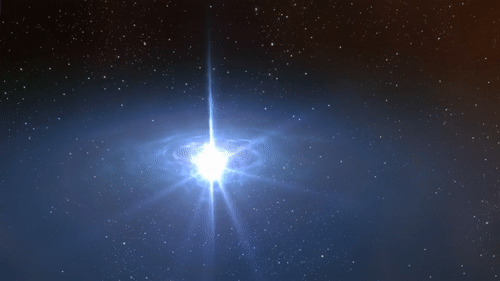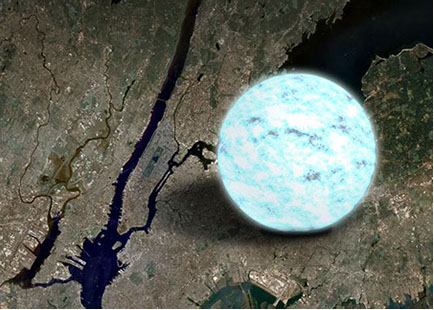
Neutron stars are amongst the most curious and fascinating objects in the Universe. They form when a massive star (about ten times the mass of our Sun and up) reaches the end of its life and has no more fuel to burn. Most of the star’s mass is ejected in the spectacular event called a supernova, but something is left over at the center of the explosion, of what was before the core of the star: a newly born neutron star.
After over 50 years from their discovery (the first pulsar was discovered in 1967), neutron stars still elude our full understanding, as we still don’t know what they are made of. Still, in the past 50 years, we have learned a lot about them. For example, we have measured the masses of many of them and we have a good guess on what their average radius is. These measurement places them on the 2nd place for the most compact object in the Universe, surpassed only by black holes: they have a mass that is a bit more than our Sun’s, but the radius of a small city (about 10 km). This means that on average if you take a sugar cube of a neutron star, it weighs as much as Mount Everest!
Such compactness translates into an extreme density: the core of a neutron star is denser than an atomic nucleus. Under unbelievable pressure, nuclei in the inner crust of neutron stars merge into the core, forming a plasma of neutrons, protons, and electrons. Deeper inside the core, theory predicts new kinds of particles to mix with the neutron-proton-electron plasma, which have only been seen in highly energetic heavy-ions collisions: hyperons. Deeper still, there is the possibility of a phase transition into a completely different state of matter: particles like neutron, protons, and hyperons would disintegrate into their fundamental components, free quarks, forming what is called a quark-gluon plasma.

All of this falls well into the realm of theory, as there is no other place in the Universe where we can experiment with such high densities. For this reasons, neutron stars are the only laboratories available to study the physics of matter at extremely high densities, and until we can send a probe directly to a neutron star, the only way we have to study these fascinating objects is by building new and more sensitive telescopes.
Compactness is not the only remarkable characteristic of neutron stars. The strongest magnetic fields in the Universe are also found in neutron stars, and in particular on the surface of magnetars, the most highly magnetized neutron stars, with magnetic fields of billion times higher than any magnet on Earth. Also, neutron stars spin incredibly fast, with the fastest neutron star ever discovered rotating at a whopping 700 times a second.
Many neutron stars emit in the X-rays, either because they are young and hot and/or active, or because they are being fed hot material by a companion star (in what is called a binary system). In both cases, Colibrì will be able to probe the X-ray emission from neutron stars and unveil their mysteries.
